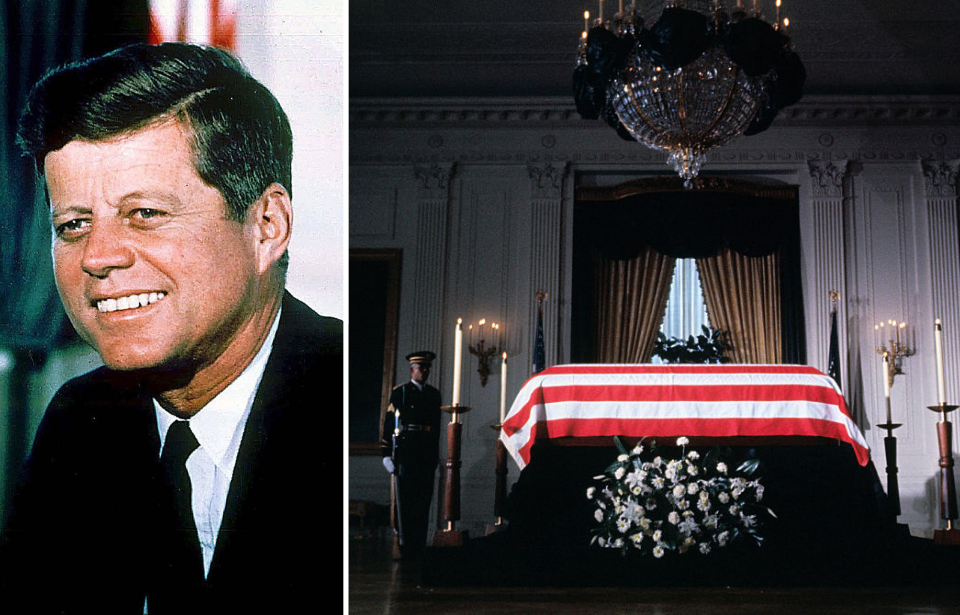The assassination of US President John F. Kennedy is still one of the most widely discussed events in American political history. After he was fatally shot in the head and neck, his body was transported from Texas to Washington, DC, in a bronze casket.
However, many might not realize that this wasn’t the casket he was eventually buried in.
John F. Kennedy’s assassination
On November 22, 1963, John F. Kennedy, Texas Governor John Connally and their wives were riding in a motorcade through downtown Dallas. At 12:30PM, shots rang from the Texas School Book Depository, aimed at the convoy. The person behind the shooting was US Marine Corps veteran Lee Harvey Oswald, who’d recently been hired at the book depository.
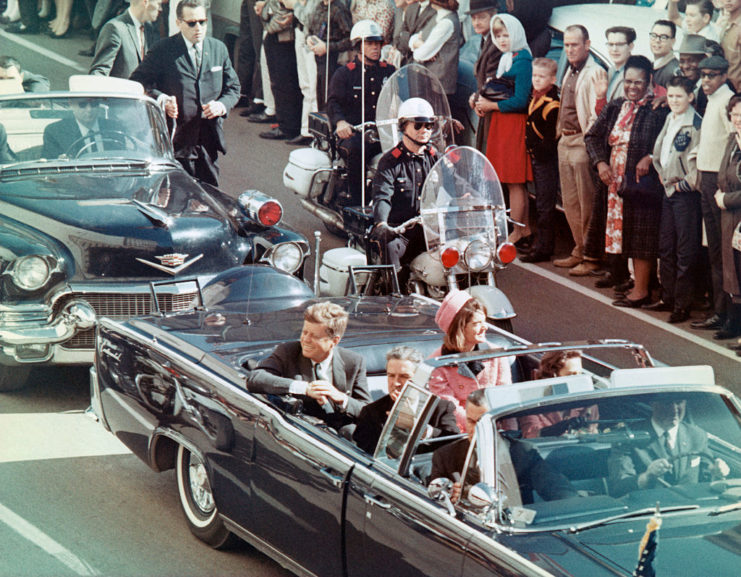
Kennedy was hit in the head and neck, while Connally was shot in the back. Kennedy was rushed to Parkland Memorial Hospital, where he was pronounced dead at 1:00 PM. While seriously wounded, Connally recovered from his injuries.
At just before 2:40 PM, Vice President Lyndon B. Johnson, who’d accompanied the Kennedys in the motorcade and was two cars back during the shooting, was sworn in as the country’s 36th president aboard Air Force One.
The need for two coffins
Immediately following Kennedy’s assassination, a member of his staff contacted O’Neal’s Funeral Home in Dallas, requesting the best casket available be sent to the hospital. Funeral home owner Vernon O’Neal chose a bronze casket with a white satin interior from the Elgin Casket Company, priced at $3,995—equivalent to more than $36,000 today.
After loading the casket into a hearse, O’Neal drove to the hospital and was shocked by the state of Kennedy’s body, with blood still seeping from his wounds. To avoid staining the casket’s interior, he and several nurses wrapped the body in linen sheets and lined the casket with plastic.
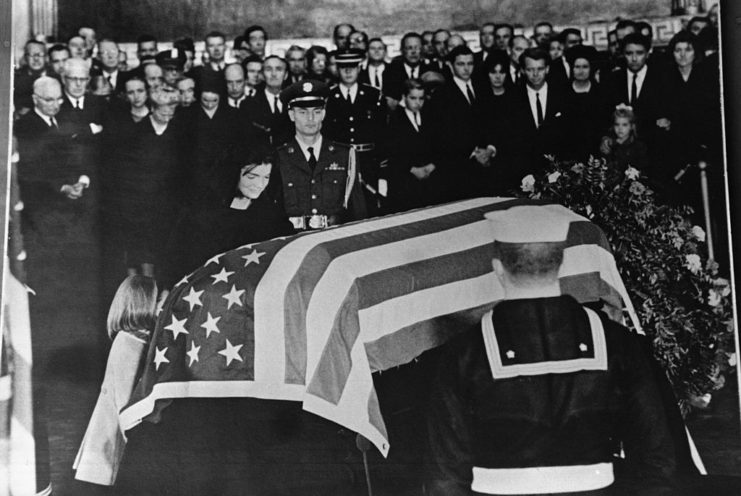
At Jacqueline Kennedy‘s request, the autopsy took place at Bethesda Naval Hospital near Washington, DC. Her husband’s body was flown back to the nation’s capital in the passenger section of Air Force One. When the casket was opened at the hospital, O’Neal’s protective measures proved inadequate.
By the time the body was embalmed, the original casket was no longer suitable for Kennedy’s viewing at the Capitol Building and was replaced. Unsure of what to do with the original, the funeral home that handled the embalming kept it in their possession for more than a year.
Preventing it from falling into the hands of the “morbidly curious”
Following Kennedy’s burial, the US government and Vernon O’Neal began arguing over the cost of the original coffin. The government felt the price was excessive, and O’Neal wanted it returned to Dallas, as he’d received offers of $100,000 – equivalent to nearly $1 million today – from those interested in purchasing it.
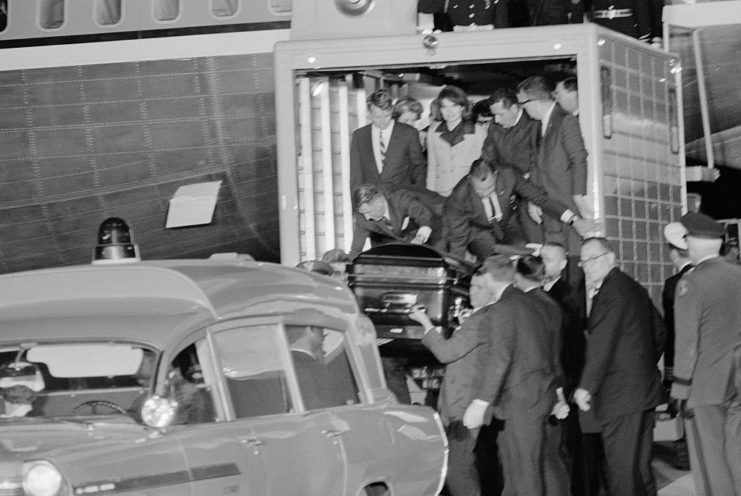
Not wanting the casket to fall into the hands of the “morbidly curious,” the government paid O’Neal what was owed and placed it with the National Archives, where it remained for two years.
Burying the casket at sea
In 1999, documents were released regarding the casket’s fate following its stay in the National Archives. Robert Kennedy, the United States Attorney General at the time, had approached the government about having it buried at sea, to ensure it never fell into the hands of those who would exploit his brother’s death. Once approved the job of disposing of it was given to the US military.
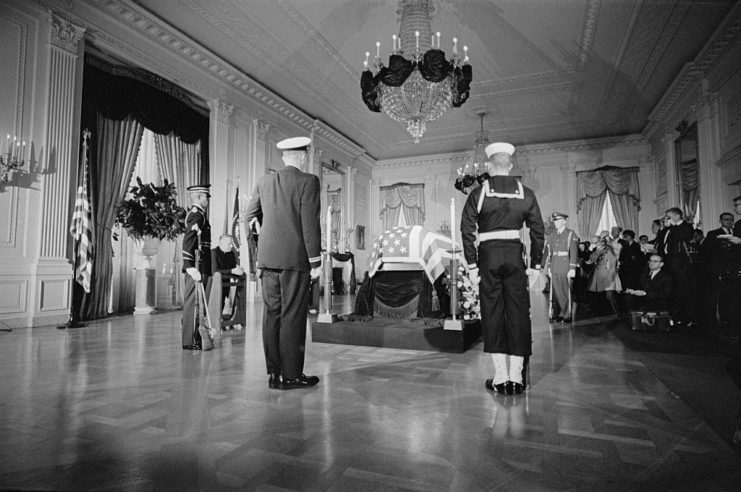
A submarine commander was tasked with figuring out how to securely drop and sink the casket. It was turned over to the US Air Force, and had 42 holes drilled into it and three 80-pound sandbags placed within. It was also fitted with two parachutes, to ensure it wouldn’t break apart upon impact with the water.
On a brisk February morning in 1966, a C-130 Hercules transport plane took off from its base and flew out into the Atlantic Ocean, approximately 100 miles east of Washington, DC. The area, used as the military’s dumping ground for unused and outdated ammunition and weapons, was chosen because it was out of the way of regular shipping and air travel and would “not be disturbed by trawling and other sea-bottom activities.”
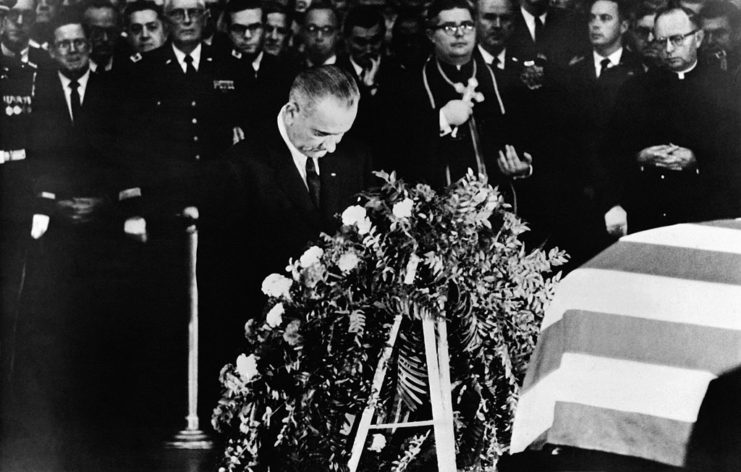
After descending to 500 feet, the tail hatch of the plane was opened and the casket was dropped into the water. According to a February 25, 1966 memo from the special assistant to the defense secretary, “the parachutes opened shortly before impact and the entire rigged load remained intact and sank sharply, clearly and immediately after a soft impact.” After circling the area for 10 minutes, the C-130 flew back to the mainland.
Are you a fan of all things ships and submarines? If so, subscribe to our Daily Warships newsletter!
The casket’s fate was rather fitting, as Kennedy, a Navy veteran, had once considered a burial at sea.
